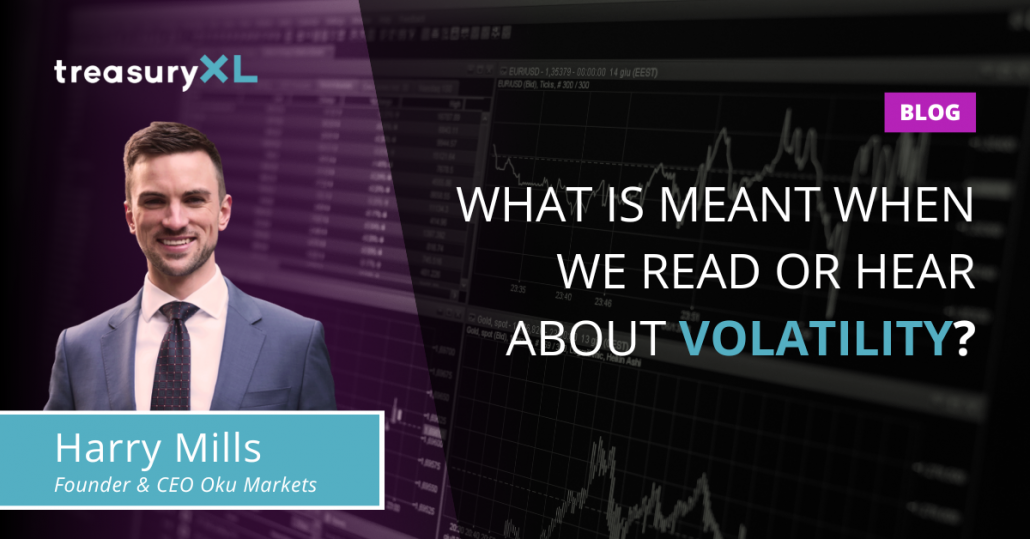Safe Haven Currencies | By Harry Mills
04-10-2023 | Harry Mills can guide you in navigating these currency market dynamics and making informed decisions
04-10-2023 | Harry Mills can guide you in navigating these currency market dynamics and making informed decisions
15-9-2023 | treasuryXL and Ebury would like to invite you to join us for an exciting live session on the topic of: Fluctuating Interest and Currency Markets: What to expect & do?
12-09-2023 | It sounds straightforward, switching FX providers from one to another, but, there are a few hurdles to jump and common sticking points we’ve seen over the years.
23-08-2023 | Currency markets are unpredictable and can be highly volatile.
03-08-2023 | A spot contract is a trade for immediate settlement.
04-05-2023 | You may have come across a currency described as being “pegged” to another, probably against the US dollar, but what does it mean?
12-04-2023 | Inherent risk and residual risk are simple but important concepts to grasp when assessing risk. This article explores how these concepts fit into a risk management programme and why it’s important to know your numbers!
28-03-2023 | Harry Mills | treasuryXL | LinkedIn | Inherent risk and residual risk are simple but important concepts to grasp when assessing risk. This article explores how these concepts fit into a risk management programme and why it’s important to know your numbers!
09-11-2022 | Harry Mills | treasuryXL | LinkedIn
We all have an intuitive feel for what volatility is – we know when a market is exhibiting high or low volatility because we see differences in price changes. But it pays to be more precise with our language and to understand what is meant when we read or hear about volatility.
By Harry Mills

Let’s start with a more instinctual and accessible definition:
Volatility is the rate at which prices change from one day to the next. If some currencies or other financial assets routinely exhibit greater daily price changes than others, they are considered more volatile.
Harry Mills, Founder & CEO Oku Markets
In his preeminent book, Option Volatility & Pricing, Sheldon Natenberg refers to volatility as “a measure of the speed of the market,” which is a particularly useful reference point when we consider that volatility and directionality are two different things: an underlying’s price can slowly move in one direction over time with very low volatility, or perhaps it swings wildly from day to day, but over a year it’s not changed much.
Now we have a feel for what volatility is, how do we quantify it? This third definition explains what it actually is: the annualised standard deviation of returns, and Natenberg refers to volatility as “just a trader’s term for standard deviation.”
This isn’t an article on standard deviation per se, but if you’re unaware of what this means then it is a measure of the dispersion of data around the average. Take for example if we measure the height of 1,000 people:

Volatility is always expressed as an annualised number – this uniformity means that everybody knows what is meant when we talk about volatility being X%. In that sense, it’s rather like interest rates, which are also always described as an annualised figure.
This might not be so immediately useful to a trader or a risk manager, though, who might be thinking of daily or weekly price movements and where their risk or opportunities lie. Volatility is proportional to the square root of time, so to convert annualised volatility into daily, we simply divide the volatility by the square root of the number of days in a year – but we need trading days – on average there are 252, equating to 21 trading days a month. The square root of 252 is 15.87, but most traders approximate this to 16…
Hence, if we have a contract trading at 100 with a standard deviation of 20%, then: 20%/16 = 1.25%. We would therefore expect to see a price change of 1.25% or less for every two days out of three (+/- 1 standard deviation is around 68%).
Returns… I won’t go into detail, but if you want to explore this I would recommend chapter 10.6, The Behaviour of Financial Prices, in Lawrence Glitz’s superb Handbook of Financial Engineering which explains how price returns follow a normal distribution and prices follow a lognormal distribution. I’ll also add that calculating the standard deviation of prices doesn’t provide meaningful information because what we are looking for is the change from one period to the next, so we need to look at the daily returns!
Still here? Ok… let’s take it down a notch and look at the types and uses of volatility
There are a few types of volatility that can be measured, but by far the most commonly used and referred to are historical and implied volatility:
Volatility is a common measure of risk, and it is a key component of Value at Risk modelling. But be warned of the ubiquitous disclaimer that past performance is no guarantee of future results.
Historical volatility is useful to understand how an asset or a currency has performed in the past – you can line this up with significant macroeconomic events and understand why there may have been a period of change, and you can get a feel for how the underlying “normally” behaves. For example, trading in the Turkish lira will probably present a higher risk than in, say the Swiss franc.
Thanks for reading!

Harry Mills, Founder at Oku Markets